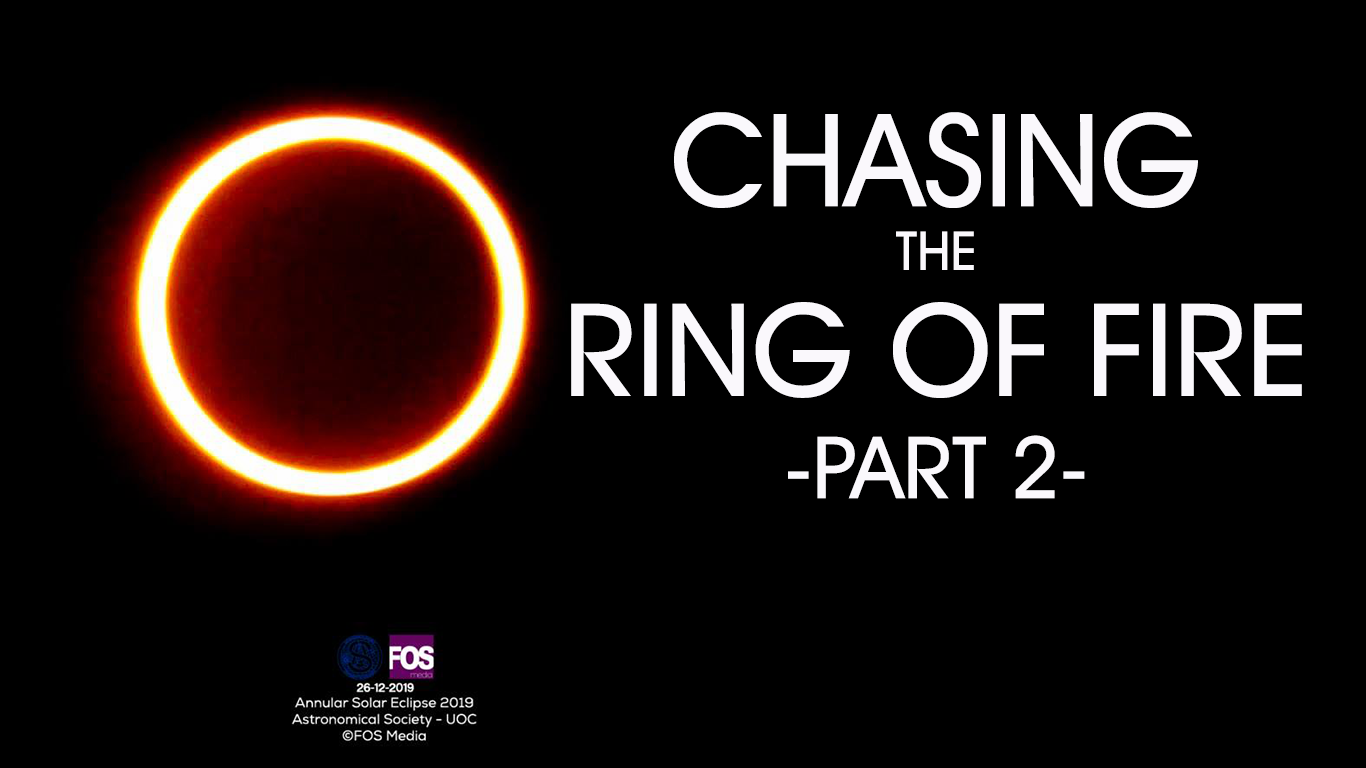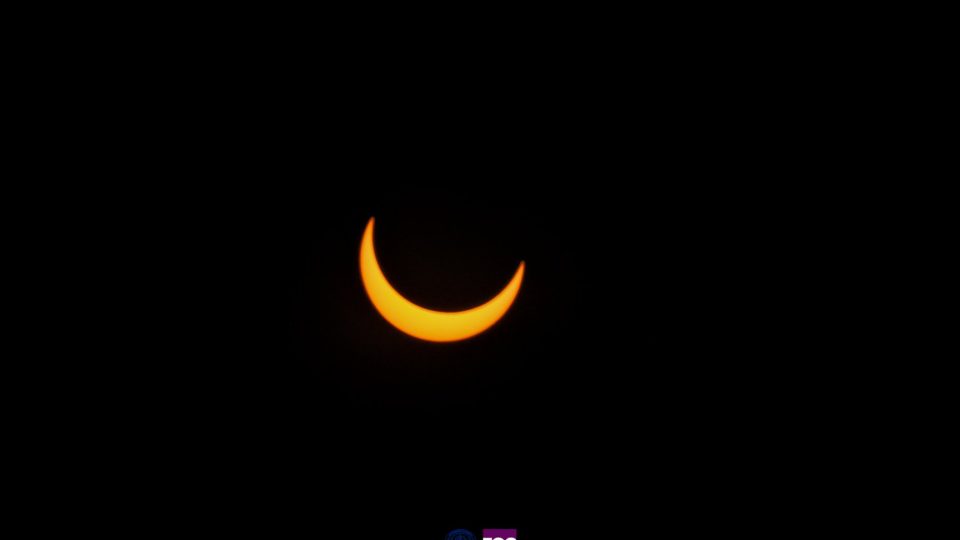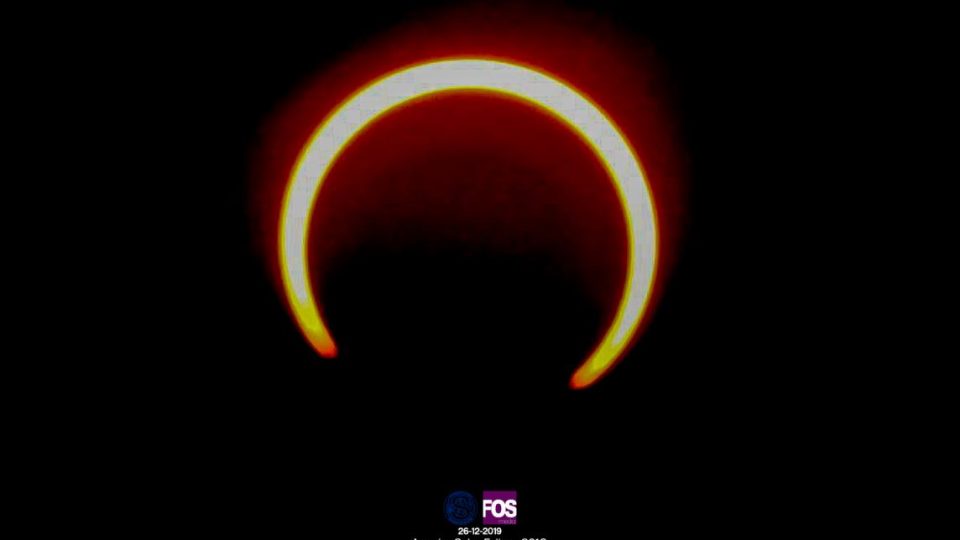The ring of fire is the playful pet name we gave to the last annular solar eclipse visible to Sri Lanka for the next 10 years. The gang of ten woke up at 4.00 am on the day of the eclipse and hurried to get ready. By 5.45 am, we had our gear outside, waiting for the bus from the University of Jaffna, which was scheduled to arrive at 6.00 am. The first bus would take our gear. Then the gang of ten would have breakfast and go on the second bus at 6.30. Afterwards, the rest would follow in the third bus at 7.30 am.
Early Morning Blues
It was 6.15 in the morning, and there was still no sign of the bus. On any other day, we could ask the organizers to pause the event until we get our equipment ready. But we obviously can’t ask the moon to wait for a few minutes till we set up, can we? So, four of us decided to ditch our breakfast and grab whatever gear we could take in our hands, and walk the 1.5 km from the Bright Inn to the Playgrounds of the University of Jaffna.
We got to the grounds, found tables, and even got electricity to our site. It was 6.40 am and there was still no sign of the bus. So, we could only bide our time and draw up a plan to speed up the gear-down process. The moment the bus arrived, we sprang into action. Those gathered at the grounds by then saw a very fast assembly of 4 telescopes, a live-stream setup, and video cameras. We wanted to be online by 7.30 am. Somehow, we managed to go-live at 8.00 am.
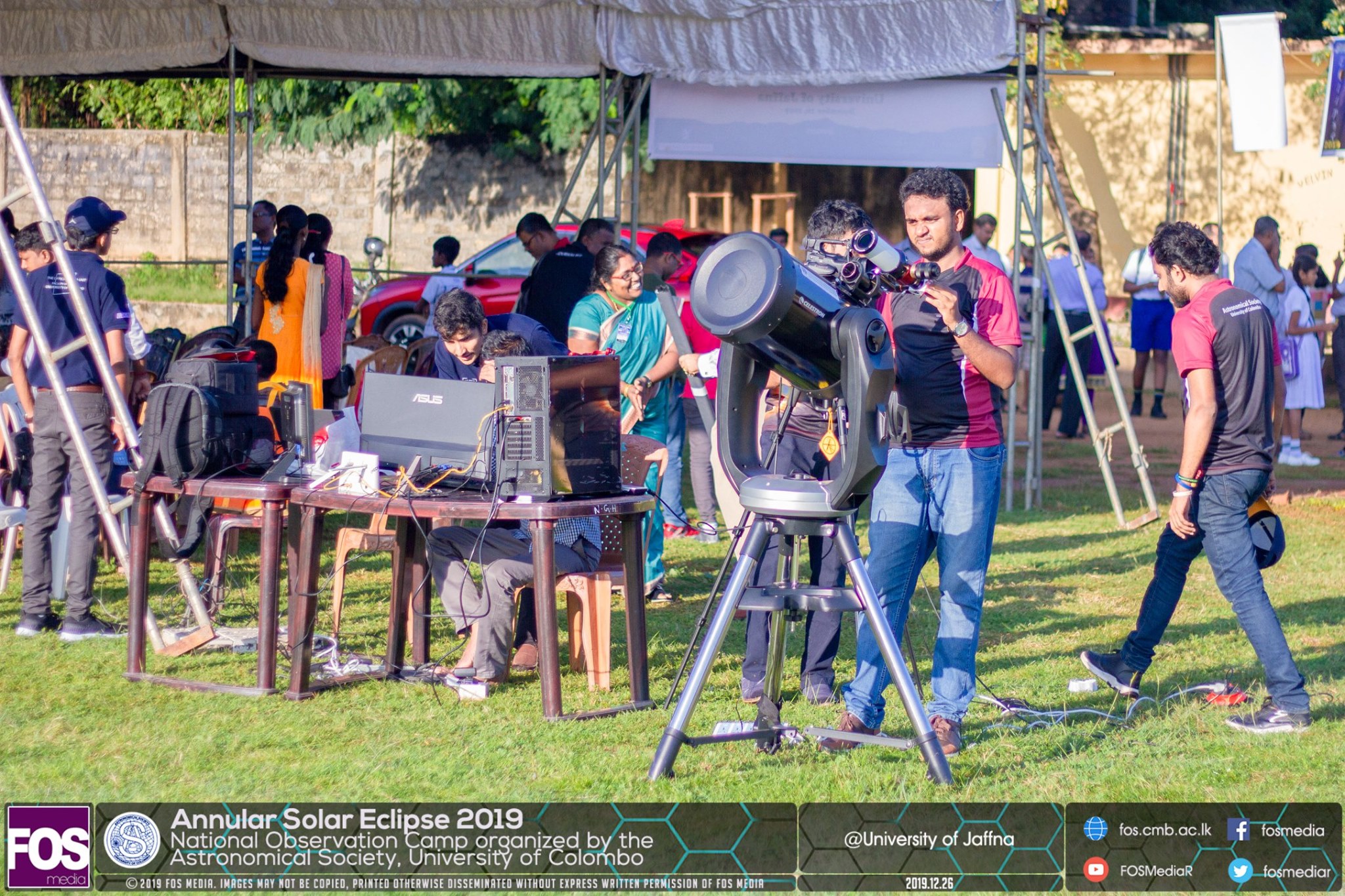
We are live on Facebook
“A very good morning to all of you! We are live from the picturesque University of Jaffna Playgrounds!”
After cutting down on half-an-hours’ worth of my opening script, that was all I could come up with. The rest of my monologue was totally improvised. By this time, a group of enthusiastic first years led by Thurunu Chalitha made their way to the grounds. A long journey on the night-mail didn’t deter them from ditching breakfast to help us out. Everything was running smoothly. We had a live feed from the special telescope fitted with an H-alpha filter to go with my commentary. We also had the prospect of interviewing key individuals related to this event. Also, data from one of two research projects were also available for us on our screens. The moon had started to take bites off the sun’s disk. We were all in smiles.
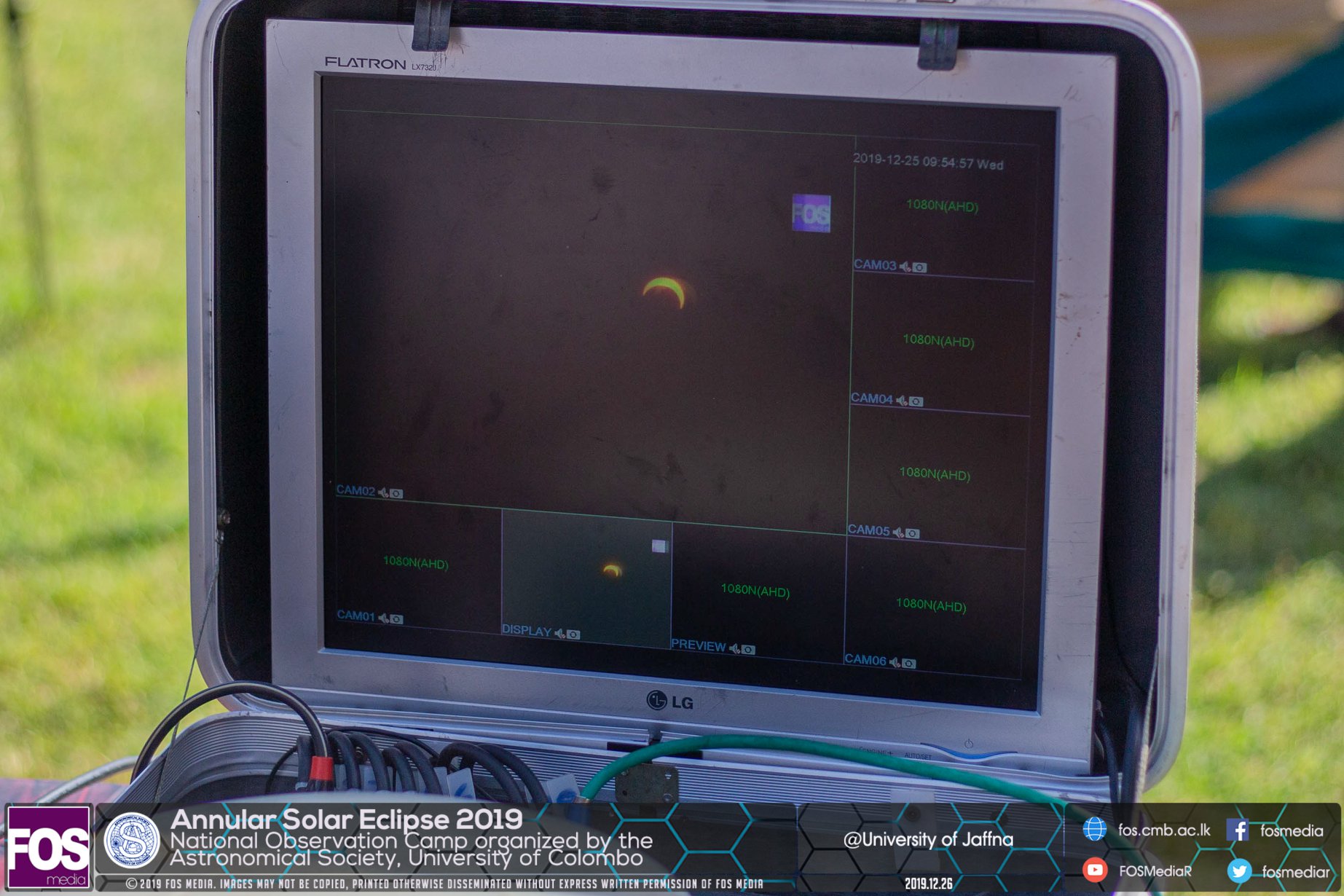
Murphy Gives us a Heart-Attack
Murphy’s law states that:
“Anything that can go wrong will go wrong”

Just as the chief guest for the event, the Hon. State Minister of Technology and Innovations, Mr. Thilanga Sumathipala arrived, the indicator on the bottom right of our screen turned red. “Connection නෑ!” Thankfully though, we got our connection back as soon as he left our area. We managed to get an interview with Mr. Sumathipala, Prof. Chandana Jayarathne, and even Dr. Gavrilov.
But Murphy wasn’t done playing with us. As we approached the epic climax to the ring of fire, the images from the gear we had from the astronomical society (which were worth millions) weren’t clear. Nothing which Subodha Rangana and Lahiru Aththudawa tried, worked. The eclipse looked like a blurred image of a mango. We covered the live feed as the team struggled to get the image back on track.
Each and every one of us was on the case. We got countless calls and messages from our team in Colombo. We couldn’t even respond to them. It was a do or die situation. How we got a crystal-clear image of the eclipse just moments before it reached annularity shall remain a secret shared amongst those who were involved with the event. For the purposes of this article, credit for the idea shall be given to Sasanka Kavinda. Rifath Farook, Gamitha Senanayake, and Pranith Madubashana carried out the idea to perfection.
Winding Up
It was a relief for all of us. We had witnessed a rare phenomenon first hand. We brought it to your screens to the best of our abilities. The return journey commenced after lunch, and the boys edited as much of the media possible until the laptops ran dry. The team released the best clicks of the ring of fire before the day was even over. We reached Colombo well past midnight and left for our homes with our heads held high. The memories made will be remembered forever.
PS: I would be failing in my duty as a science student if I don’t mention the research work carried out parallel to the eclipse. We had two research projects at our two sites, Jaffna and Colombo. Up in Jaffna, the team had an Arduino setup to measure the variation of temperature, humidity and pressure with the eclipse. The team in Colombo had a replica of that setup. In addition, they had an apparatus to measure the effect on gravity. Science was the ultimate winner thanks to the ring of fire.
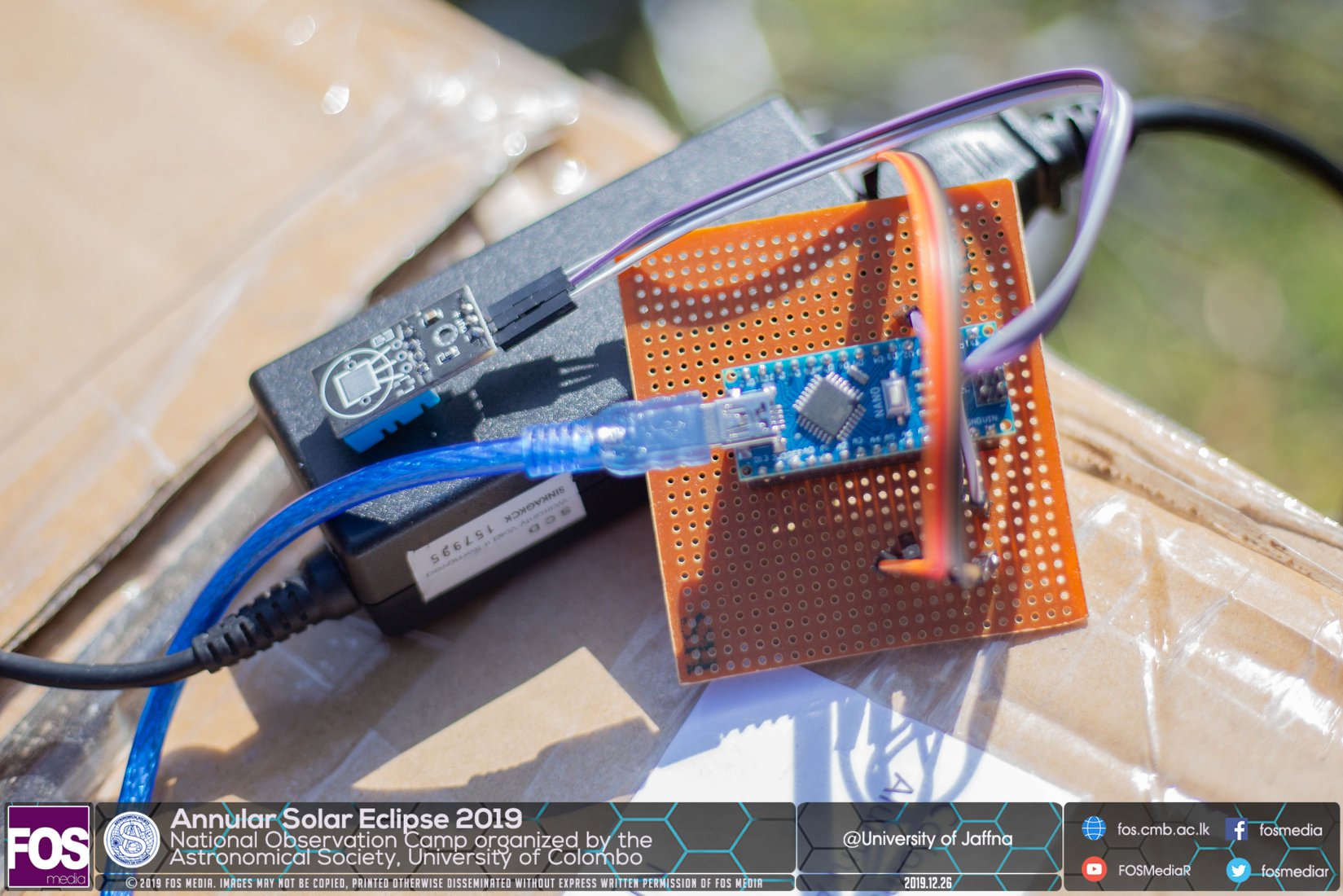
Check out the full live stream here: https://www.facebook.com/fosmedia/videos/590718441692658
Media Credits: FOS Media
This is part 2 of the 2-part series of articles about the coverage of the annular solar eclipse 2019. Click here to read part 1 if you haven’t done so already.

